Name: Matthew Campbell
Age: 44
Marital status: Married, one child
Education: Bachelor’s and Master’s degree in Chemical Engineering from the McGill University in Montreal, Canada,
Position: Technology Manager since 2022
“Modification is a small department with highly skilled people who rarely say “no” and often say “yes”.
The modification team have to rely largely on themselves to deal with the day-to-day challenges – because there aren’t many others to ask. But in my experience, when people are given responsibility, they step up. Leadership is about showing respect and trust!
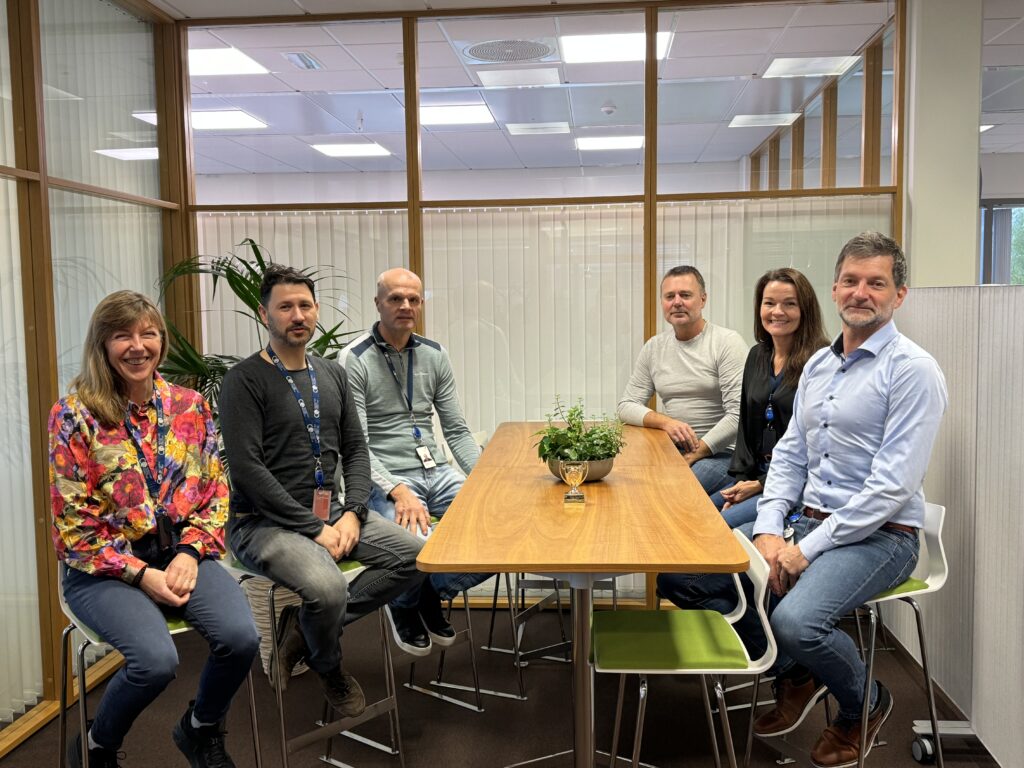
Kjetil Hantveit became head of the modification department at TCM in 2014. Prior to that, he had worked for almost ten years at Equinor on several large oil and gas projects in the North Sea and onshore, including the Mongstad refinery and the construction project for the new technology centre.
“I was used to having a large team of experts around me and knew that wouldn’t be the case at TCM. But I was intrigued by the many and varied technical challenges and the responsibility that comes with putting my name to the solutions that the team collectively decides are best for each operation or project.”
His team includes Magne Tresvik, an electrical engineer who, in addition to planning and installing all electrical systems, also ensures that documentation and drawings are kept up to date. Roger Solheim is the site supervisor who co-ordinates all modification work with the engineering and operations departments and analyses HSE risks. Istvan Szabo is a PDMS designer who continuously updates the plant’s 3D model to incorporate modifications using the Plant Design Management System (PDMS), now better known as E3D. These four form the core of Modifications. They also benefit greatly from the services of Elisabeth Nilsen as document controller and Jorunn Hovda, who works in finance and administration with budgeting and monitoring all orders and requisitions. The department also manages two people who work permanently at TCM with scaffolding and installation work.
“What sets this team apart is their extensive experience in knowing what’s needed to ensure that every test campaign planned at the Amine Plant and the site for Emerging Technologies can be carried out in accordance with the customer’s wishes and conditions. Among the employees, Istvan is the youngest, having started his career at TCM in 2015!”
“Typically, we receive proposals from the operations and engineering departments for changes that need to be made to the structures as part of a campaign. Our job is to evaluate possible improvements based on a study of the specific technology being tested, such as pipe dimensions and other technical issues that naturally arise. Our technical assessments lead to a solution, which is then estimated in terms of cost. Once the basis for modifications has been decided, our role is to ensure that the changes on paper are carried out on the plant. We make agreements with suppliers for welding and electrical work, and make sure they do what we’ve agreed. We then carry out tests before handing over the installations to operations. In addition, we maintain a dialogue with Business Development when potential customers have questions about what modifications are required for a possible technology test at TCM.
“I can honestly say that we don’t face any challenges in terms of collaboration at TCM. We’re a small organisation with specialised expertise in CO2 capture, and we’re used to working across departments to solve problems that may arise in connection with a test campaign. The feedback we get from our customers shows that the team spirit at TCM is highly appreciated.
Two test campaigns have started at TCM this autumn: Honeywell at the amine plant and Svante at the Emerging Technologies site.
“The Honeywell campaign involves the installation of new and better measuring equipment, which will remain permanently at the amine plant after the campaign. For Svante, we have been involved with their people in the assembly and installation of the modules that will be used and tested to ensure that they work as intended. I’m optimistic that these campaigns will go smoothly.
“Over the years, Modifications has played an active role, including the installation of a new filter (BD) in the plant to reduce the amount of particles in the flue gas. We’ve also made several improvements both inside and outside the absorber tower. We are currently working on a study of possible modifications to adapt the plant to the new composition of the flue gas we receive from the refinery’s heat plant”.
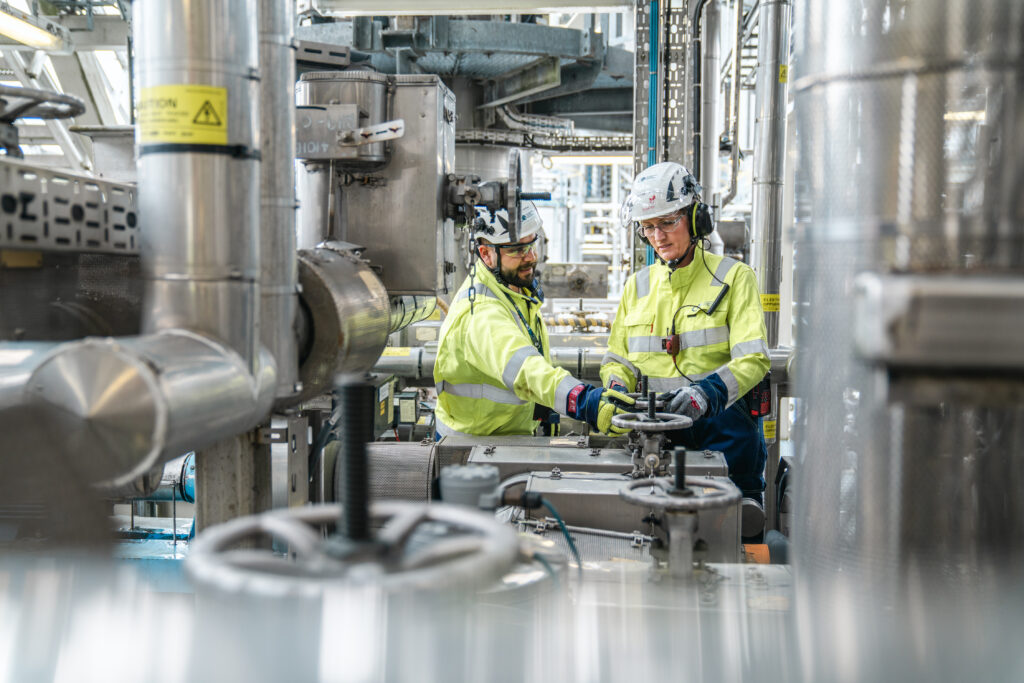
“For our part, we are already seeing the benefits of AI, for example in calculating the dimensions of equipment. However, we need to make sure that we, as humans, understand the basis for the results that appear on the PC, so that we don’t make bad investment decisions. We’ve also acquired equipment that allows us to visualise planned changes to the plant before they are physically made. So yes, we’re constantly adopting new technology to do the job better and with fewer people than before.
“The work being done now to strengthen the sustainability of TCM’s operations is great – because with this transition we have all the conditions to continue as the world’s largest and most flexible CO2 capture test centre. Change has played a central role in the establishment of the Site for Emerging Technologies, and I believe we need to focus even more on becoming the site of choice for testing new and innovative capture methods. The expansion with new areas and increased capacity will provide plenty of work not only for us in Modifications, but for the whole of TCM. Most importantly, we must continue to be a company with great opportunities for professional development and a strong internal culture. Those of us who work at TCM are privileged, both because we do very important work and because the working environment is exceptionally good. This gives me confidence for the future!
An advanced solvent for post-combustion carbon capture developed through a partnership involving the University of Texas at Austin (UT Austin) and Honeywell is set for engineering-scale testing in October at the Technology Centre Mongstad (TCM), the world’s largest carbon capture test facility located in western Norway.
The new Honeywell/UT Austin technology is an advanced solvent designed to capture carbon dioxide (CO2) found in flue gases generated from power, steel, cement and other industrial plants. The technology is the product of a multi-year cooperative agreement that was supported by the U.S. Department of Energy Office of Fossil Energy and Carbon Management and managed by the National Energy Technology Laboratory (NETL).
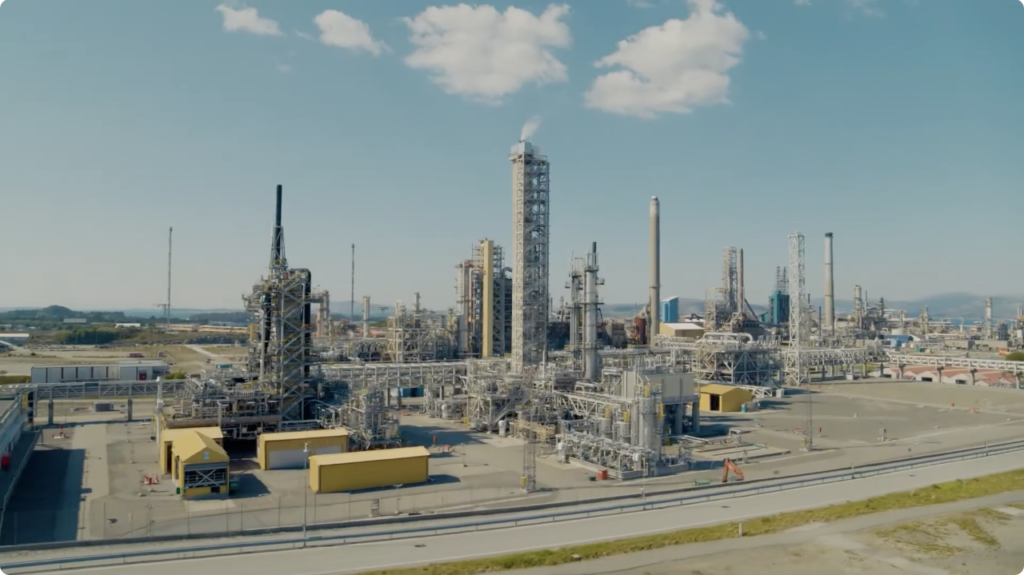
Engineering-scale testing enables technology developers to understand the technical and performance risks of the technology and validate scaling factors that will enable design of future commercial-scale systems.
In the technology to be tested, CO2 is absorbed into an amine solvent and then sent to a stripper where it is separated from the solvent. This CO2 would then be compressed for geological sequestration or used for other purposes. The technology is designed to be retrofitted within existing plants or included as part of a new installation.
The engineering-scale testing of the solvent technology beginning in October builds upon successful pilot-scale testing performed at the National Carbon Capture Center in 2023 and at UT Austin’s Separations Research Program plant in 2022. That testing totaled approximately 7,000 hours.
The lessons learned through long-term field tests, along with complementary bench-scale studies on mitigating solvent oxidation, has led to a technology solution to capture 95% of a facility’s CO2 emissions while managing non-CO2 emissions and reducing operating costs and environmental impacts relative to state-of-the-art carbon capture approaches.
According to the International Energy Agency, carbon capture can contribute about 20% of reduction in CO2 emissions needed to prevent uncontrolled global warming and achieve zero emissions targets. Testing and validation of CO2 capture technologies is an important part of the solution to the climate crisis.
TCM is the world’s largest and most flexible test facility for developing CO2 capture technologies and a leading competence center for carbon capture. It features unique scale and flexibility to simulate real-world conditions for post-combustion capture.
Ismail Shah, TCM’s managing director, said “TCM is glad to welcome Honeywell to our amine facility. We are looking forward to testing and verifying Honeywell CO2 capture technology and efficiently achieving campaign objectives by offering TCM capabilities. Together we will support accelerating commercialization of Honeywell’s technology.”
Large-scale, real-world testing fills an important gap between small-scale pilot projects and full-scale deployment of technologies. The TCM facility provides the ability to test a wide range of technologies on industrial flue gases as well as access to a comprehensive data set that can be used for comparison with similar or other technologies.
Honeywell is an integrated operating company serving a broad range of industries around the world. The business is aligned with three megatrends – automation, the future of aviation and energy transition. Honeywell helps organizations solve complex challenges, providing solutions and innovations through aerospace technologies, industrial automation, building automation and energy and sustainability.
UT Austin collaborates with a diverse array of partners — including entrepreneurs, investors, technology incubators, and large enterprises — and generates more than 150 new technologies each year, providing abundant and varied opportunities for industry collaboration.
NETL is a DOE national laboratory that drives innovation and delivers solutions for an environmentally sustainable and prosperous energy future. By using its world-class talent and research facilities, NETL is ensuring affordable, abundant, and reliable energy that drives a robust economy and national security, while developing technologies to manage carbon across the full life cycle, enabling environmental sustainability for all Americans.
“As carbon capture and storage (CCS) gains momentum globally, Norway has established itself as a frontrunner. TCM and Norway’s strong technology environments have a unique opportunity to build on this position in the years to come.”
“Wenn jemand eine Reise tut, so kann er was erzählen.” In English, this well-known quote from the poet Mattias Claudius roughly translates to, “When someone goes on a journey, they return with stories to tell.” TCM’s Managing Director, Muhammad Ismail Shah, has undertaken three longer international trips in recent months and is brimming with impressions he’s eager to share.
The most recent trip was to India, the world’s most populous country, where the government is aiming to reduce annual CO2 emissions of 2.9 gigatons to net zero by 2070 — all while tackling widespread poverty.
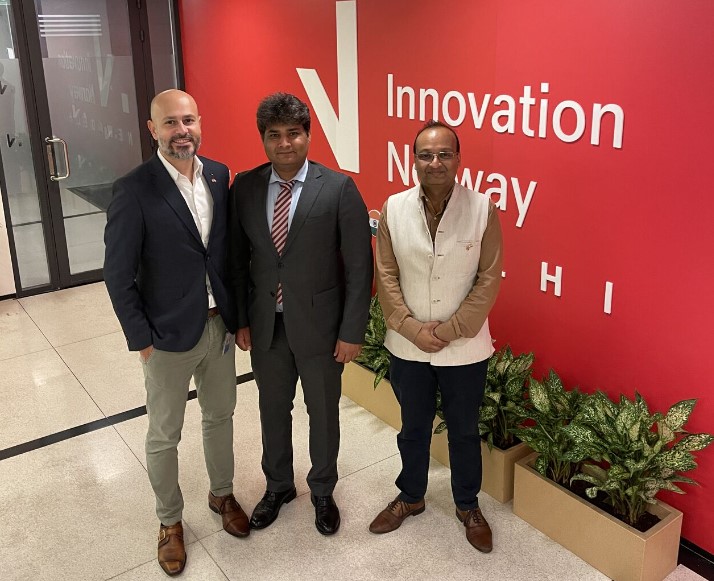
During his visit to India, Mr Shah was introduced to stakeholders from Govt., energy and heavy industries, facilitating fruitful discussions on the latest innovations in carbon capture, opportunities for technology transfer, and the critical role of multilateral partnerships in addressing global challenges. Photo: Innovation Norway
“India is at the start of its journey to reduce emissions, but both politicians and industry leaders understand there is no alternative,” says Shah. “That’s why it was so inspiring to meet with key leaders of energy supply companies and emission-heavy industries and talk about Norway’s Longship project and the role TCM plays in developing technologies that make it possible to realize this and several other global CCS projects.”
During his well-organized week-long stay, coordinated by Innovation Norway’s local representative, Shah also attended an event at the Norwegian Embassy in Delhi, where the Norwegian Parliament’s Foreign Affairs and Defense Committee met with prominent Indian politicians and business leaders.
”What makes India particularly interesting for Norway is the trade agreement signed between the two countries this spring, which eliminates tariffs for over 90 percent of the goods we export. For TCM, this agreement lays the foundation for developing collaboration on technology, which will be crucial for India to reduce its enormous climate emissions in the long term.”
While Shah sowed seeds on his trip to India that will take time to sprout, his participation in the annual conference of the U.S. National Energy Technology Laboratory (NETL) was of a different caliber. Together with Chief Technology Officer Matthew Campbell and Business Development Manager Rouzbeh Jafari, he met around 1,500 participants from leading CCS communities in the U.S. and Europe.
”I participated in a panel discussion with representatives from American test centers and exchanged interesting views on how we can contribute to the further development of both mature and new carbon capture technologies. Once again, the experience was that TCM is held in high regard, both for our excellent facilities and the support we provide technology developers in planning and conducting test campaigns.”
At the NETL conference, the TCM delegation met with companies considering testing at Mongstad. These meetings were a key step toward commercializing new technologies.
”We also had good discussions with clients who, over the years, have conducted test campaigns at the amine plant or the Site for Emerging Technologies, and who may return to Mongstad. In addition, we enjoyed a pleasant dinner with the leadership of the CCS department at the U.S. Department of Energy (DoE), which is a strong contributor to funding the development of innovative capture technologies.”
Shah noted that the impression is that the Biden administration’s significant focus on technology development through the Inflation Reduction Act (IRA) is likely to continue regardless of the outcome of the November presidential election, as it has strong support in Congress. ”In the U.S., CCS as a tool in the climate fight has momentum that is hard to find elsewhere in the world”, Shah emphasizes.
Muhammad Ismail Shah and Communication Manager Liv Lønne Dille gained more insight into this during the Carbon Capture Global Summit in London. The conference gathered participants from all the major CCS players worldwide, where TCM had a well-visited stand.
“The professional environments in Europe are undoubtedly working hard to bring cost-effective technologies to market. However, while major projects in Norway and Denmark are already up and running, and projects in the UK are nearing investment decisions, most other European countries continue to face delays due to a lack of critical investment,” Shah highlights.
”Once this ‘bottleneck’ is resolved, I’m confident it will unlock a large market for TCM’s services, such as technology refinement and personnel training for operating CCS plants. That’s why it’s incredibly important that we in Norway succeed with the value chain for capturing, transporting, and storing CO2, thus showing Europe that CCS can be implemented in practice.”
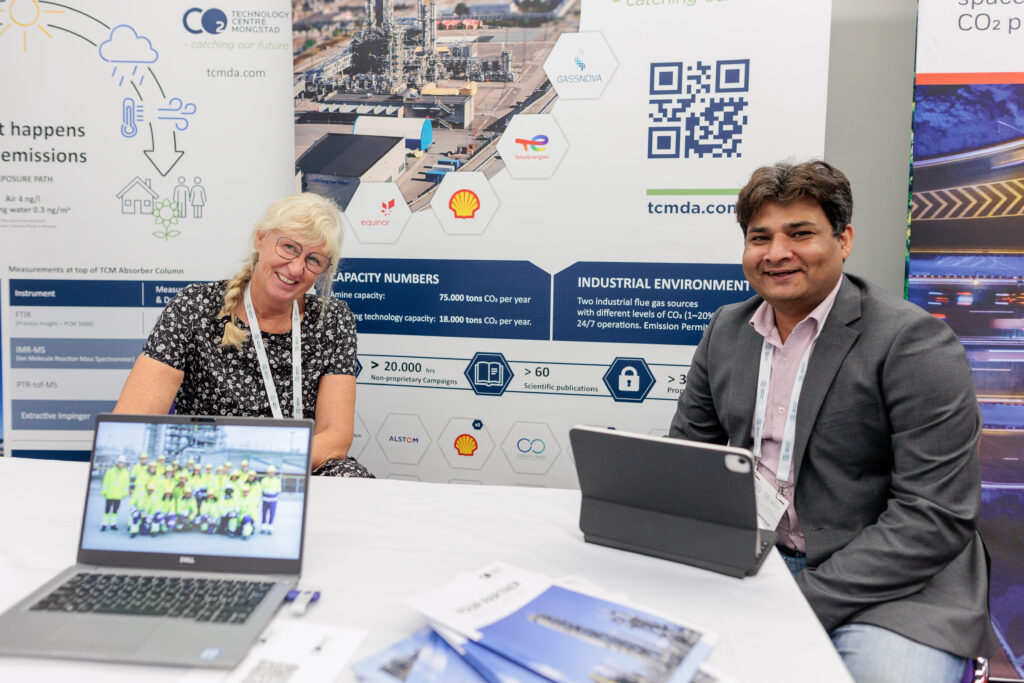
From 20 to 24 October 2024, the world’s CCS experts will meet at GHGT-17 in Calgary, Canada. TCM is pleased to contribute to the conference with five oral presentations and three poster presentations.
The titles of the GHGT-17 papers and short summaries of the next four are described below. The first three presentations can be found here.

The article presents a dynamic modeling tool designed to help industries prevent contamination of nearby water sources by carcinogenic nitrosamines (NSAs) and nitramines (NAs) from amine-based CO2 capture plants. The study describes the formation of NSAs and NAs in the air from escaped amines, the local dispersion conditions, and their eventual deposition in water sources. Preliminary applications of the tool at different sites, including a Norwegian lake, show potential risks and seasonal fluctuations in NSA and NA levels. The tool incorporates complex processes and is being improved with a new atmospheric module validated by airborne measurements. It can also evaluate technological measures to reduce amine emissions and subsequent contamination.
This article details the successful 6-month demonstration of Shell Global Solutions’ latest CANSOLV technology at the Technology Centre Mongstad (TCM). Results to be shared by Shell Cansolv during this conference.
This paper presents lab and pilot scale test results and a techno-economic analysis for a sorbent-based CO2 capture process. At the conference, InnoSepra will also share some results from the tests at TCM with the 2nd generation process.
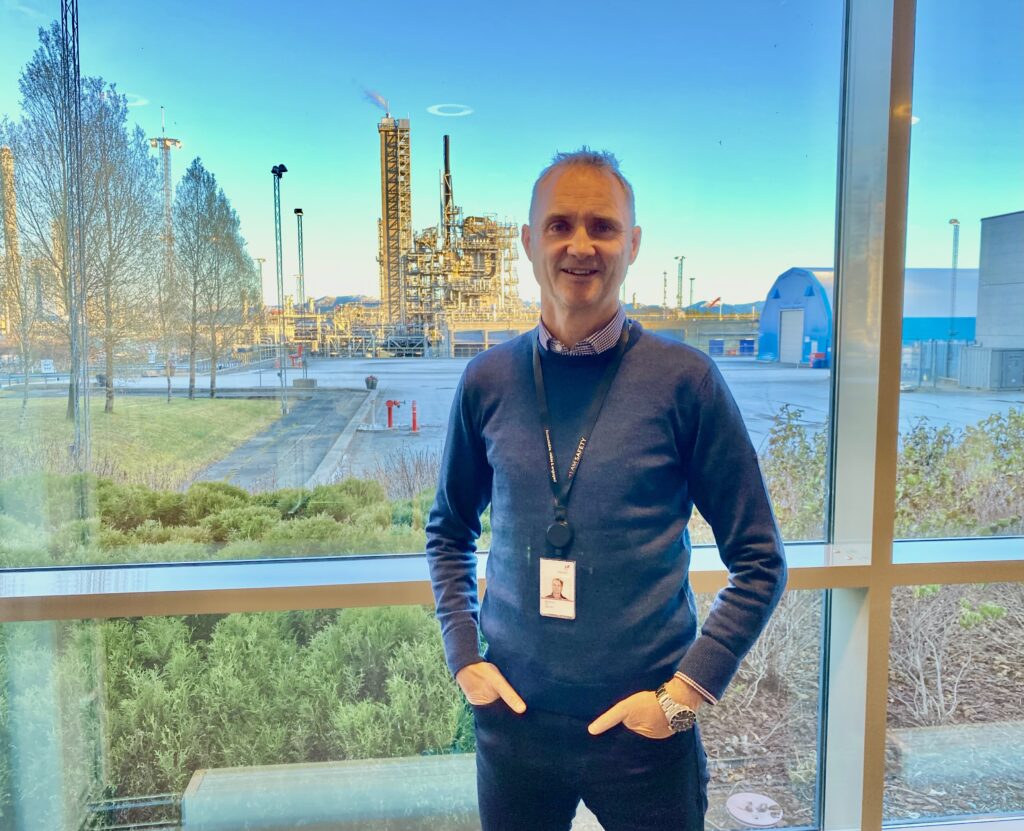
ION Clean Energy demonstrated their novel amine-based solvent system (ICE-31) at Technology Centre Mongstad. This paper presents the results of a 4-month testing period at TCM, which will be shared by ION during this conference.
If you would like to test your technology at TCM, please contact us.
In 2024, two groups comprising 59 industry leaders and researchers from Poland travelled to Norway to explore its extensive carbon capture and storage (CCS) initiatives.
The first group from Poland visited in April and the second in September, with both delegations touring the Northern Lights project in Øygarden and the Technology Centre Mongstad (TCM).
“By learning from these projects, Poland can expedite the development of its CCS infrastructure and reduce the risks associated with being a first mover,” says Paweł Gładysz, Project Manager of the Polish-Norwegian CCS Network. Seeing these installations firsthand was crucial — it reinforces the belief that ‘CCS is happening’ and strengthens their commitment to advancing CCS projects in Poland.
Representatives from Polish ministries, stakeholders of the Polish-Norwegian CCS Network, and project partners in NORWEP (Norwegian Energy Partners) and the University of Oslo participated in both study visits. The delegations included representatives from major cement and lime companies in Poland, as well as experts from the petrochemical, oil and gas, iron and steel, copper and silver, coking coal, heat and power, and fertilizer sectors.

Gladysz asserts that the technologies demonstrated in Norway, particularly through the Northern Lights project and TCM, could offer viable pathways for emissions reductions in both the energy and industrial sectors in Poland. “What happens in Norway, represents a cutting-edge innovation in carbon capture and storage value chain at commercial scale.”
He says that after visiting Northern Lights some of the emitters might consider business opportunities, considering their current efforts and need to close the CCS value chain with shipping captured CO2 abroad. “Similarly, TCM provided us with insights into the practical and technological aspects of CO2 capture solutions that can be adapted to industrial use.”
“Following the April visit, participants were asked for feedback regarding the scope of the visits and the discussions they were involved in. Overall, we received very positive feedback! Participants highlighted that they gained valuable insights into CCS, particularly how the initiatives in Norway are progressing and what Norwegian stakeholders have to offer. Considering the results of the survey, there is a strong motivation to continue the development of the CCS projects in Poland, including the potential bilateral cooperation within different parts of the value chain”.
Personally, Pawel Gladysz, was quite impressed by the facilities at TCM. “As a process engineer working on modelling and simulation of CO2 capture installations, I found it impressive to see them in real life. The discussion with people responsible for this success was inspiring and motivating at the same time. Therefore, I was glad that during the second visit in September, our colleagues from Institute of Energy and Fuel Processing Technology from Zabrze, Central Mining Institute – National Research Institute from Katowice and Institute of Power Engineering – National Research Institute from Warsaw, had a chance to see it as well. For them, this also was inspiring and gave a chance to see how the CO2 capture technologies can progress.”
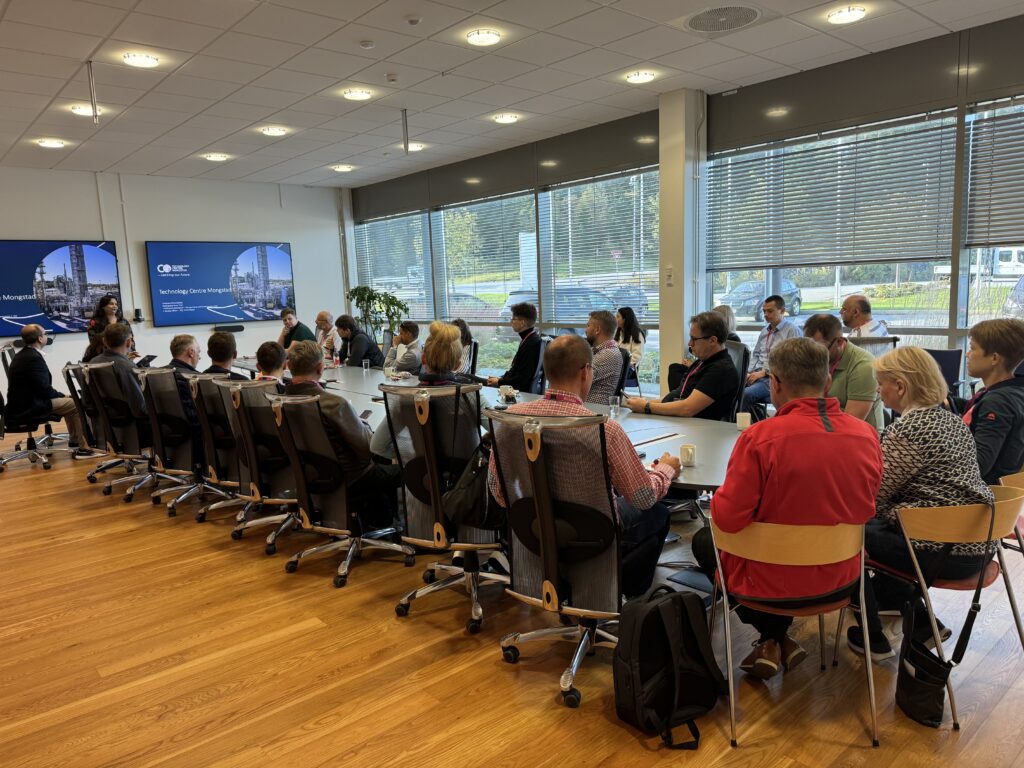
“Institute of Energy and Fuel Processing Technology and Central Mining Institute – National Research Institute from Katowice are leaders in Poland when it goes to CO2 capture installations development in pilot and demonstration projects. Our colleagues, within shared collaboration, operate the Clean Coal Technology Centre situated in Zabrze and Katowice which has pilot plants of various scales. The ones located in Zabrze are used for testing the gasification and solid fuels pressurized oxycombustion, CO2 capture using the amine method, studying the gas combustion in a microturbine, chemical looping, as well as selective coal grinding, screening and drying.
During a study visit by Norwegian stakeholders to Poland in June, we showcased our facilities. As Polish CCS sector grows, there is a need to validate the technologies that are going to be implemented, as well as to consider moving forward with technologies developed in Poland. We see a strong potential for ongoing collaboration with TCM on various levels, including testing CO2 capture technologies that are expected to be implemented in Poland in the coming years. Many technology providers have tested their solutions at TCM facilities, strengthening confidence in their full-scale industrial applications. This is of great value for Polish emitters interested in building and operating CO2 capture plants.
On our last visit, we also went to Brevik CCS demonstration project. I was not alone feeling overwhelmed with the number of companies and entitles actively involved in CCS value chain in Norway. It was equally valuable for Polish stakeholders to witness the momentum building around CCS in Norway. Therefore, we plan to continue our work through the Polish-Norwegian CCS Network in the coming year, demonstrating through concrete examples that CCS is truly progressing.”
“Quality is my top priority at TCM, ensuring that every technical aspect we handle meets the highest standards.” These are the words of Matthew Campbell, the Technology Manager at Technology Centre Mongstad.
Matthew emphasizes the importance of a structured approach in their daily operations, managing new technologies through rigorous testing and meticulous planning to achieve consistent excellence.
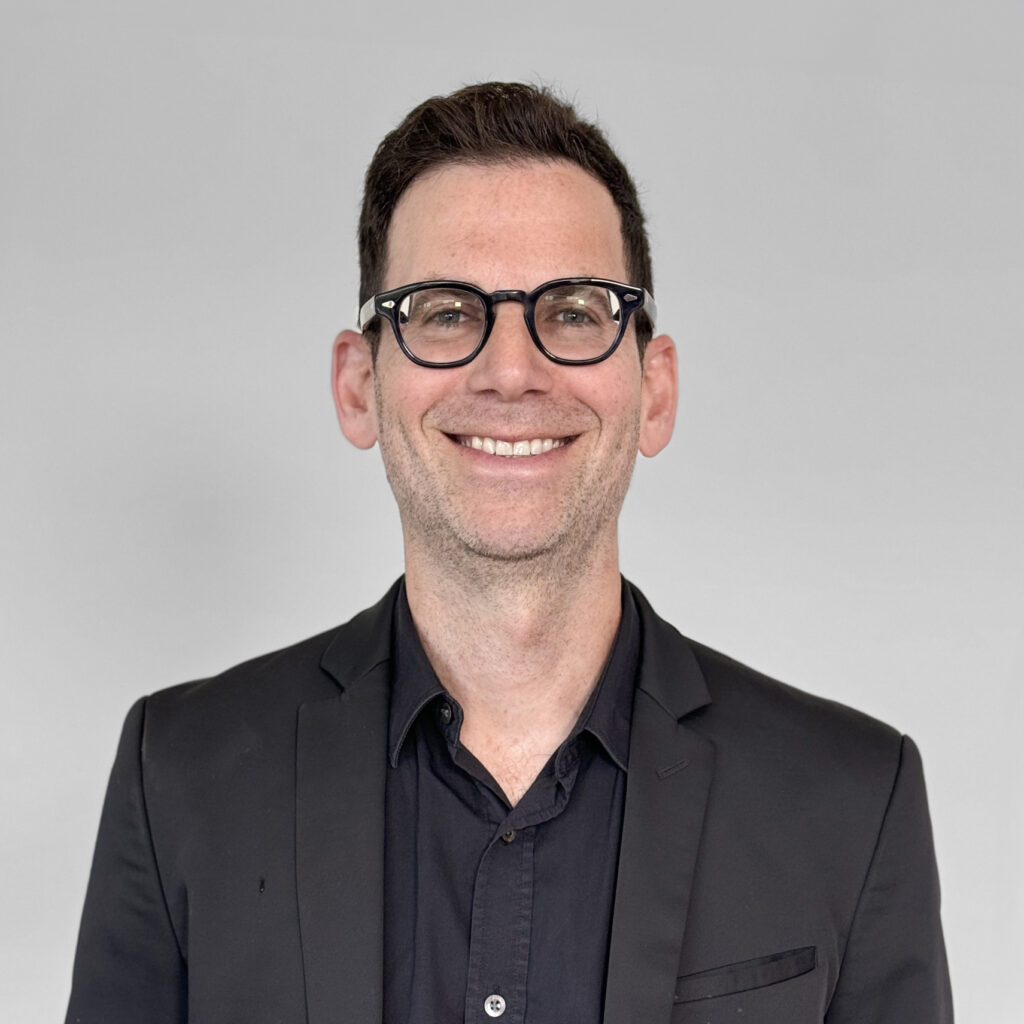
Matthew Campbell started at TCM in 2019 and has been the Technology Manager since 2022. ”TCM has evolved significantly over the last years”, he says in this interview.
”My first encounter with TCM was back in 2014 when I was working as a technology vendor. I visited TCM to discuss a potential test campaign and ensure that all requirements would be met. I was impressed by the team’s high level of competence and their focused, effective way of working. That experience left a strong impression on me, so when the opportunity to join TCM came five years later, I didn’t hesitate — even though it was heavy rain when I visited Mongstad for the first time!”
”The chance to work at TCM, a leader in CO2 capture, was the first thing that excited me about the role. My career goals are very much aligned with advancing CO2 capture and CCS technologies, so this position was a perfect fit. My expertise in CO2 capture and the deployment of these technologies has been invaluable, and my goals have continued to evolve since joining the team.”
”My 14 years at Shell Cansolv gave me a deep understanding of the technical aspects of CO2 capture and taught me the importance of structured thinking. I learned how to prioritize effectively and navigate challenges in complex situations. These lessons have been incredibly valuable in my role at TCM, helping me to make informed decisions and drive projects forward.”
”As Technology Manager, my top priority is ensuring that everything TCM is involved in, from a technical standpoint, is delivered with the highest quality. I work with a team, both onsite and remotely, to deliver test campaigns and provide technical input for Advisory Services and EU-funded consortiums. Each day is different, but we maintain a structured work process to manage new technologies in both testing and planning phases.”
Name: Matthew Campbell
Age: 44
Marital status: Married, one child
Education: Bachelor’s and Master’s degree in Chemical Engineering from the McGill University in Montreal, Canada,
Position: Technology Manager since 2022
”Collaboration is crucial at TCM. We have various teams — Technology, Operations, Engineering and Modifications, HSE/QR, and Finance and Administration — working together on every phase of a test campaign. Effective communication is key, so we’ve developed various platforms to facilitate this. Our onsite testing manager plays a pivotal role in ensuring smooth communication across all teams.”
”This autumn, we have important tests lined up at the amine plant, including one with a proprietary solvent and another with the open-source CESAR1 solvent. These tests are crucial for further reducing CO2 capture costs, which aligns with TCM’s long-term goals. We’re also starting to explore advanced research on CO2 compression, including testing impurity levels and material compatability, which will be vital for CCS moving forward.”
”I believe in trusting my team and giving them the freedom to come up with ideas and solutions. I actively review their proposals, providing feedback and guidance, but I always encourage teamwork and collaboration. This approach leads to the best results, not just within my team but across all of TCM. Recognizing and leveraging each individual’s skills is essential for our success.”
”Since our current Managing Director, Muhammad Ismail Shah, took the helm, TCM has evolved significantly. We’ve become more sustainable, and there’s a stronger focus on teamwork and making strategic decisions that benefit both TCM and the industry. The working environment has improved, and I believe most of us are optimistic about TCM 2.0 after 2026.”
”Our biggest challenge is maintaining the right level of staffing and expertise while managing economic constraints. Delivering high-quality work and preserving TCM’s reputation is critical. We’re working closely as a management team to make necessary decisions to ensure TCM’s success moving forward.”
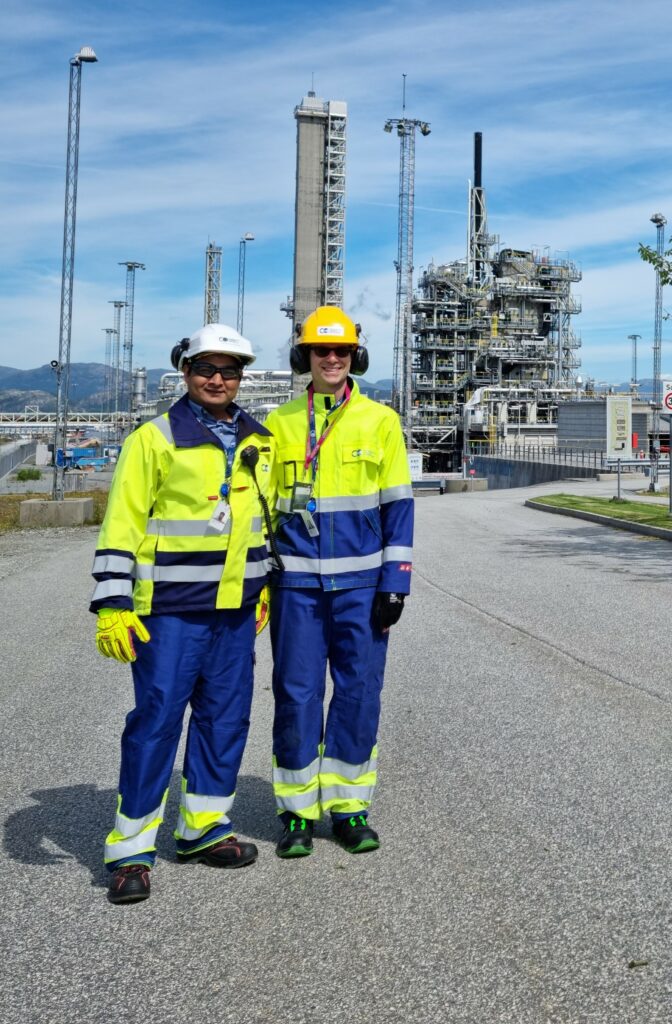
”In the next 30 to 40 years, I believe CCS will be essential, even as renewables and other options become more impactful. The industry needs TCM for our flexibility, experience, and ability to support the deployment of CCS projects. Our work in operator training and technology de-risking is critical, and I see TCM playing a significant role in the future of low-carbon technologies.”
”I’m particularly excited about trials that focus on cost reduction in CO2 capture. While amine technologies are well-established, there’s still room for improvement. We’re looking at emerging technologies like rotating packed beds and novel solvents that could significantly reduce costs. Breakthroughs in non-aqueous solvents, membrane absorption, and other innovations could take CO2 capture to the next level, and I’m thrilled that TCM is at the forefront of this research.”
”We’ve built something remarkable at TCM. Our amine plant is the only facility in the world capable of testing different solvents with various configurations at a 12bmegawatt equivalent scale. I believe TCM will continue to be essential for testing technologies for global energy and environmental initiatives. I’m optimistic that we’ll find a lasting purpose for the TCM facility, not just in CO2 capture but also in supporting emerging technologies and advancing our understanding of CO2 compression and purification. The industry recognizes our value, and I’m confident we’ll continue to thrive for many years to come.”
Leading Canadian carbon capture and removal solutions provider, Svante Technologies Inc. (Svante), and Technology Centre Mongstad (TCM) in Norway, today announce that Svante’s filter process technology for industrial point-source carbon capture will be tested at TCM’s world-class facility. The test campaign is scheduled to begin in October this year.
Svante’s objective is to further validate the performance of its nanoengineered filters for industrial carbon capture. The company aims to demonstrate its material stability and low emission profile through parametric testing with flue gas from the Residue Fluid Catalytic Cracker (RFCC) unit at Equinor’s Mongstad refinery.
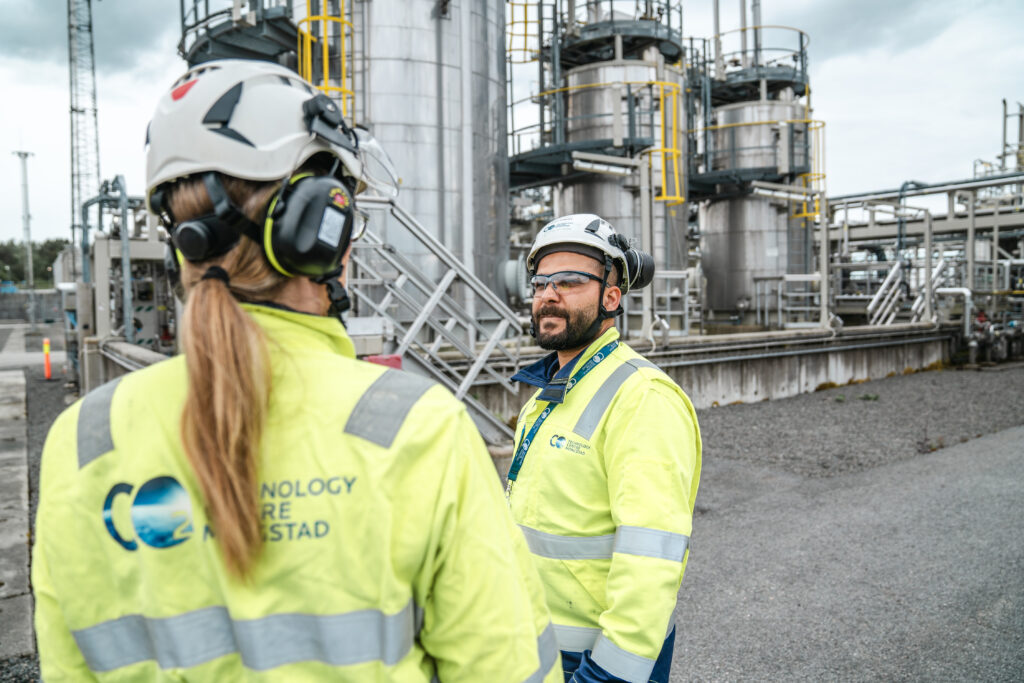
Svante has previously demonstrated its solid sorbent-based carbon capture technology in pilot projects targeting secondary emissions from cement and natural gas boiler applications. To further validate its technology as a sustainable solution for industrial carbon capture, Svante has chosen TCM as its third-party testing partner, leveraging TCM’s unmatched ability to detect secondary fugitive emissions. Along with testing Svante’s filters using RFCC flue gas, TCM will evaluate the technology for other industrial applications by increasing the contaminant levels in the gas to simulate other harsh industrial emissions sources.
Validating the stability of Svante’s technology under rigorous testing conditions will underscore the resilience of the company’s filters against flue gas impurities like SOx and NOx, while highlighting their outstanding emissions performance. These test results have the potential to eliminate the need for pre-flue gas cleaning, paving the way for substantial cost savings in carbon capture operations.
“TCM’s advanced analytical capabilities, especially in detecting emissions to air, make them a key partner for this project. This collaboration enables us to validate that our technology operates without harmful chemical fugitive emissions. Using non-toxic sorbents and preventing secondary emissions are critical steps for scaling carbon capture globally. We’re confident that, together with TCM, we can demonstrate this for the Svante process,” said Mark Claessen, Senior Vice President of Growth and Project Delivery at Svante.
Test operations will commence at the end of October and continue until February 2025. An extension until the end of 2025 is possible, subject to the availability of flue gas from Equinor’s Mongstad refinery.
Muhammad Ismail Shah, Managing Director at TCM, welcomes the collaboration with Svante, stating, “It is very satisfying that a prominent capture technology developer like Svante has chosen TCM as the venue for its tests. Our staff are ready to ensure effective execution of the tests, and to provide expert advice throughout the campaign”, said Shah.
Svante is a purpose-driven, leading carbon capture and removal solutions provider. The Vancouver, Canada-based company manufactures nanoengineered filters and modular rotary contactor machines that capture and remove CO2 from industrial emissions and the air in an environmentally responsible manner. Svante is on the 2024 Global Cleantech 100, the XPRIZE Foundation’s XB100 – World’s Top 100 Deep Tech Companies and was ranked second among private companies in the Corporate Knights’ Future 50 Fastest Growing Sustainable Companies. The company draws its name from Svante Arrhenius, one of the pioneering scientists who first identified the correlation between increased CO2 levels in the atmosphere and the warming of the Earth’s surface.
For more information, visit www.svanteinc.com and follow Svante on LinkedIn at www.linkedin.com/svantesolutions.
Svante
Colleen Nitta
Director, Marketing & Communications
+ 604-970-2813
Technology Centre Mongstad (TCM)
Liv Lønne Dille
Senior Communications Manager
+47 48 11 40 88
Five company visits in two days were on the agenda when 36 students from the Department of Earth Sciences at UiB (University of Bergen) recently went on a field trip to Nordhordland.
This semester at UiB they are taking the course “Energy Transition”, so Technology Centre Mongstad (TCM) was a natural stop. “The purpose of visiting the diverse industrial cluster is to get the students out of the lecture halls and into the real world. The presentation and tour at TCM certainly contributed to this,” says Professor William Helland-Hansen.

UIB students at TCM.
“Carbon capture and storage (CCS) is an important topic in the energy transition. At TCM, chemists Fred Rugenyi and Dimitrios Siozos gave the students an interesting introduction to CO2 capture technologies, followed by a long and fruitful discussion on the challenges of implementing CCS as an element in the fight against climate change. They were also able to see how both mature and new technologies are tested in practice”.
This was the fourth time that the Department of Geosciences has taken bachelor students to the region north of Bergen. In addition to TCM, they visited Equinor Mongstad, Wergeland Group in Sløvåg, Renovation in Nordhordland, Gulen and Solund (NGIR) and Greenspot Mongstad.
“The special thing about the Energy Transition course is that only a third of the students are Norwegian, while the rest come from ten different countries around the world,” says Helland-Hansen. “During the semester they receive 25 lectures from as many lecturers, giving them a broad introduction to the technical, legal, economic and psychological aspects that are important for a successful global energy transition. By also gaining an insight into how industrial players in Norway are working practically to reduce climate emissions with new technologies, they will hopefully be inspired to acquire more knowledge and become part of the green transition in their respective home countries”.
After the excursion, the students will be asked to write a short essay evaluating the energy transition work of one of the five companies they visited. “It could make for interesting reading,” says the professor, adding that the department has also planned visits to Equinor in Bergen and Northern Lights in Øygarden.
“We are very grateful for the good cooperation and openness that the companies show in their presentations and discussions with the students. The encounters with reality are extremely valuable,” concludes William Helland-Hansen.
The seventeenth GHGT Conference (The Greenhouse Gas Control Technologies (GHGT)) will be held in Calgary, Canada from Sunday 20 October to Thursday 24 October.
The conference (GHGT-17) is divided into a Technical Programme and a new Business Stream Programme. TCM together collaborators will be submitting 8 full manuscripts for the GHGT-17 conference, of which 5 are accepted for oral presentations and 3 are accepted for poster presentation.
The titles of the article and their brief summaries are described below.

The study explains the degradation analysis of CESAR1 and the identification and quantification of its non-volatile degradation products. For the aged CESAR1 solvent, degradation products were analyzed and analytical methods for eight non-volatile degradation products were developed and validated. The chromatographic separation of the degradation products was performed with two different columns and two different mobile phases in isocratic mode. The manuscript details the development, validation, and application of a quantitative LC-MS/MS method to accurately measure eight degradation products.
MOF4AIR project consists of a consortium of 14 partners from eight different countries. The consortium aims to develop and demonstrate the performance of the most promising MOF materials in post-combustion CO2 capture. Technology Centre Mongstad (TCM) is one of the three selected demonstration sites to test the MOF-based CO2 capture technology at industrial scale as part of the MOF4AIR project.
This paper highlights the operational experience and results of the MOF4AIR test campaign at TCM, focusing on optimizing the MIL-160(Al) MOF-based CO2 capture system using the VPSA process. Key performance indicators, including CO2 recovery, purity, and energy consumption, were assessed over approximately eight weeks. Initial findings indicate good plant performance, though achieving target CO2 capture and purity levels has been challenging. Ongoing optimization efforts aim to improve the process, with insights from TCM’s testing guiding future enhancements.
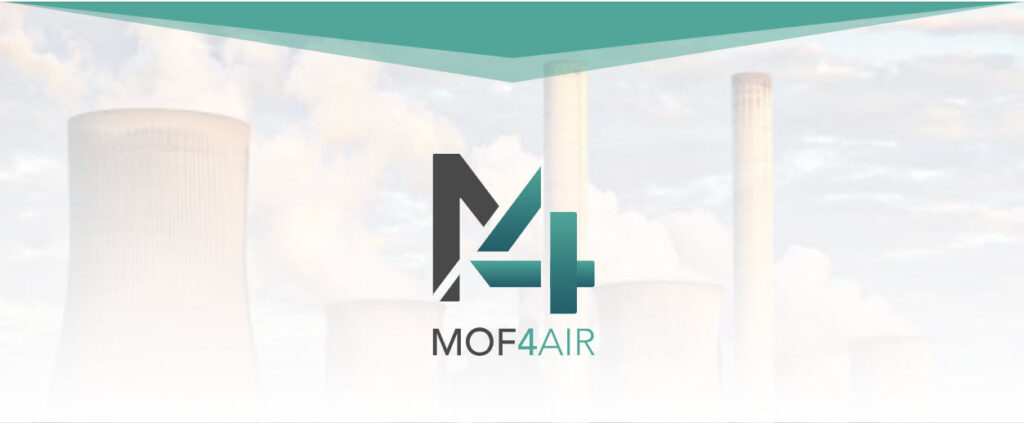
The non-proprietary CESAR1 amine blend, widely studied for post-combustion CO2 capture, is more stable than ethanolamine (MEA) under various conditions. However, knowledge gaps about its stability remain. This study aims to elucidate the degradation patterns of CESAR1 under industry-relevant conditions through oxidative and thermal degradation experiments with AMP, PZ, and CESAR1. The results will be compared to industrial samples. SINTEF has developed LC-MSMS methods to quantify over 30 specific CESAR1 degradation compounds, as well as generic amine degradation compounds.
Total nitrogen (TN) analysis was also performed to ensure identification of all nitrogen-containing degradation compounds. The manuscript presents some degradation compounds that have not been quantified in CESAR1 previously (or other amine solvents). In addition, results from purely oxidative and thermal degradation experiments will be compared with the TCM operational sample to identify the conditions at which each compound is formed. The findings will aid in the understanding, controlling, and mitigation of degradation during large-scale CO2 capture operations with the CESAR1 solvent.
The 17th Greenhouse Gas Control Technology Conference (GHGT-17), is the premier international conference on greenhouse gas reduction technologies, with a specific focus on carbon capture, utilization, and storage (CCUS). The GHGT conference series is at the forefront of advancing low-carbon solutions to combat climate change.
GHGT-17 will be hosted in Calgary, Alberta, Canada, in October 2024. This event will bring together researchers, industry leaders, government officials, and business partners from around the world to explore cutting-edge technology, innovation, and greenhouse gas mitigation strategies.
On her first day at TCM, Tuesday, March 5th, Karen Karolina Høisæter was greeted with an unexpected question: ‘The Crown Prince is visiting tomorrow. Would you like to help present the laboratory?’
The following day, Karen was ready; she shook hands with Crown Prince Haakon and and showed him around. “That was the start of my working life became a memory for life,” she says with a smile.
After a decade of studying chemistry at NTNU in Trondheim, including a year of maternity leave, Karen felt well prepared for the challenges awaiting her at TCM. However, neither her civil engineering education nor her doctoral studies covered the etiquette required when a crown prince arrives at the door, eager to learn about the laboratory’s work at the world’s largest CO2 capture technology centre. “But the Crown Prince was pleasant, and I think he got a good impression of what he saw and heard.”

However, neither her civil engineering education nor her doctoral studies covered the etiquette required when a crown prince arrives at the door, eager to learn about the laboratory’s work at the world’s largest CO2 capture technology center. “But the Crown Prince was pleasant, and I think he got a good impression of what he saw and heard.”
Once the motorcade of celebrity guests had departed and peace had returned to the TCM, the training of the newly appointed laboratory engineer began. “I was already very familiar with carbon capture technology from my PhD. But it was incredibly exciting to get a thorough tour of the plant and see how things work in practice”.
Karen Karolina Høisæter’s Ph.D. is about the stability of amine-based solvents used in CO2 capture, which is the most mature of the technologies. However, at NTNU, she also worked in a research group developing methods for capture using membranes and MOF-based technologies.
“The great thing about TCM is that it has 12 years of experience testing amine technology on an almost full scale, both from proprietary and open, research-based campaigns, but it also has an excellent facility for testing new technologies. This makes it a paradise for someone who is passionate about finding the best solutions to reduce CO2 emissions from all types of industries.”
Growing up on Bømlo, Karen was an active member of Nature and Youth during her early years. But it was her interest in science that paved the way for her chemistry studies at NTNU. She brought her boyfriend from Bergen, who was training to be a teacher, to Trondheim. Now, the couple is well-established in Åsane in Bergen, with a daughter who goes to kindergarten while her parents are at work. When their three-year-old is in bed for the evening, Karen often finds time to practice the viola. As a participant in the orchestra “Collegium Musicum” in Bergen, high standards are also set for Karen in her free time!
“The laboratory is part of Operations, TCM’s operations department, whose main task is analysis. We ensure that the solvent used in the capture processes works as it should and that the emissions associated with the tests are within the requirements set by the Environmental Directorate. This is done using both online analysis and manual sampling of the gas to ensure double verification. We also take water samples to ensure that nothing from the plant escapes into the environment.
When I started, there were only two of us sharing the work, but now we have a lab technician. For me, this means that I can focus on instrument maintenance, data processing and reporting. I also support the people in the technical department on various projects, especially those related to solvent degradation and analytical techniques. This also means that I participate in technical discussions and work on writing articles for the GHGT conference later this autumn.”
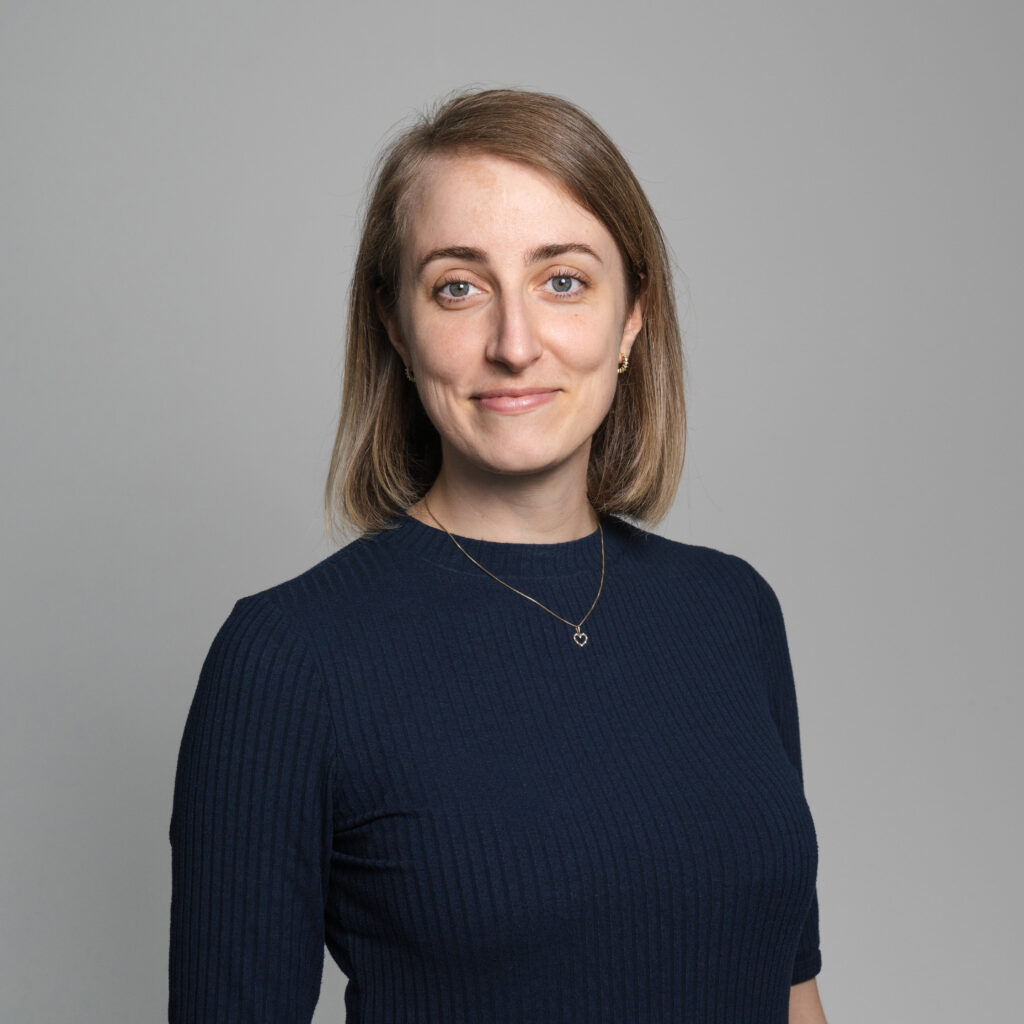
Name: Karen Karolina Høisæter
Age: 31
Marital Status: Married, one child
Education: PhD in Process Chemistry from NTNU (2023), Master’s degree in Organic Chemistry (2018)
Position at TCM: Senior Laboratory Engineer from March 2024, employed by Equinor
“I’ll get to try it out for the first time when we start a new campaign this autumn, and I’m looking forward to it. My focus will be on analysing what’s happening in the plant. This include daily reports to TCM’s campaign coordinator and the client. The workload can be heavy, depending on how the tests go. That’s why it’s good to have time in the first few months to familiarise myself with the methods and routines so that I’m well prepared when the campaign starts”.
“What impressed me was how well the organisation works and the professionalism at all levels. I mentioned the online emissions analysis earlier. The method was developed by the automation engineers at TCM, and I think it’s amazing what they’ve achieved. This is just one example of the high level of competence in the company.
At the same time, it is important to remember that TCM is not a large workplace. Collaboration across departments is critical to delivering the services and results that customers need to move their technologies forward. My impression is that people work well in teams; at least I haven’t come across any closed doors. And when we go to lunch, no one sits alone. Everyone around the table is involved in the conversation. It’s just nice to work at TCM!
“I believe that the development and improvement of carbon capture technologies is still in its infancy and will need to continue for many years, and that TCM will have a clear role to play in this work. There are no other pilots or test sites in the world that can deliver on the same scale or with the same expertise. Some people believe that the very high CO2 emissions will disappear when oil and gas are eventually replaced by renewables, but that’s a misconception. Effective capture technology will be needed in everything from steel and cement production to waste management, in fact in almost every activity the world needs to feed a growing population.
But customers won’t come to Mongstad on their own. TCM has a strong position in the international CCS community, and my impression is that the company’s business development people have ‘a lot of balls in the air’. At the same time, it will be important to be able to offer new services and products that meet the needs of technology developers. I, for one, am looking forward to the many promising years ahead at TCM.